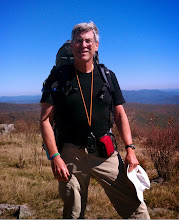Not too long ago, certainly well within my lifetime, there was a common sentiment that women were not capable of certain jobs – many jobs, actually. So even as a man, I always enjoy seeing women doing “men’s work” – and doing it well. I saw two such examples early in my Alaska trip.
The first was the Kenai Fjords National Park cruise. The captain of the ship that took us out was a young woman. She not only handled the boat all day at the helm during this eight hour day, but as captain, she had responsibility for the safety of the ship, the crew, and every one of the hundred or more passengers. She took the craft close into massive rocks to see wildlife, up to the edge of glaciers, and out into the powerful Gulf of Alaska. And she did a very competent and impressive job all day, including getting back on time despite chasing whales late in the day and docking the ship at the end of the day. If you have ever even tried docking a boat, much less a ship, in a tight place with currents and wind, you know that this is not for the faint of heart.
The second was during the float trip down the Kenai River. Our young guide, Beth, had to steer the raft down this swift and cold river with four passengers on it. If we had signed on for the all day trip, she also would have had to take the raft through rough whitewater in a canyon. Again, she was responsible for the safety of all of us, with no one to back her up.
I think that when people talk about the "good old days", they may forget that there were negative things about the old days as well. And certainly the concepts of “men’s work” and “women’s work” were among these. I would guess in many societies around the world, this concept is still alive and well, but it is fading here. I, for one, am glad about this.
Top 12 Moments in My Racing for a Cure Memories
10 years ago














 We saw three bald eagles, including this immature one and this adult:
We saw three bald eagles, including this immature one and this adult:












 Tufted puffin
Tufted puffin
 Murres
Murres




































